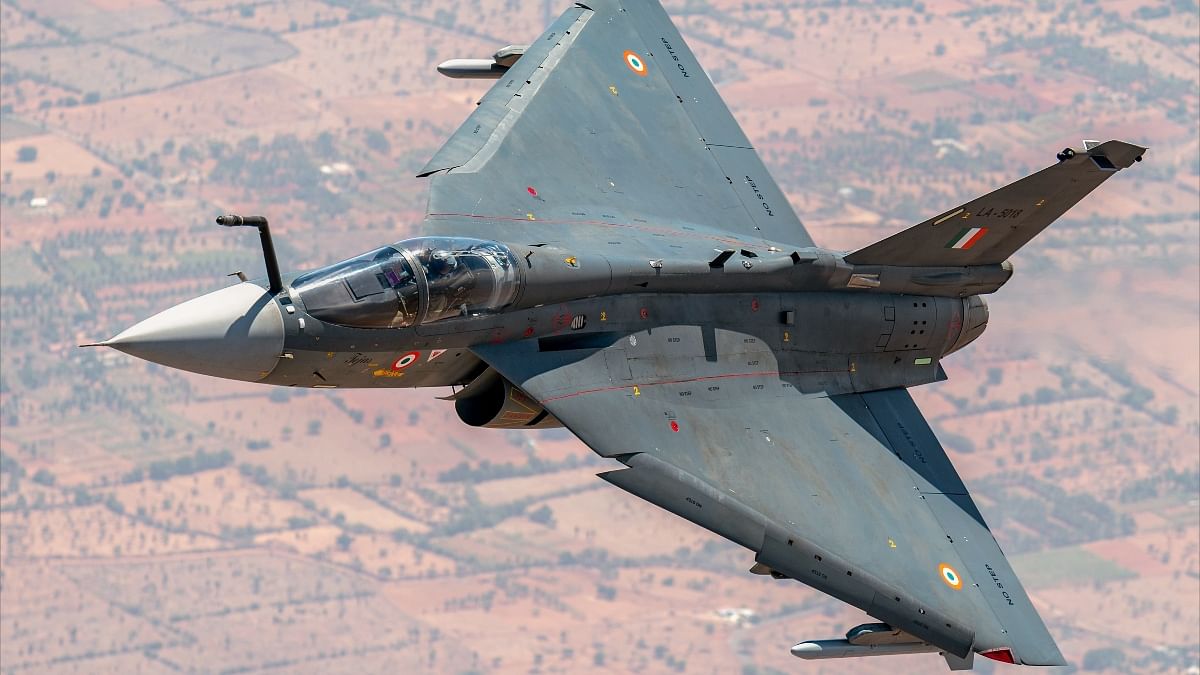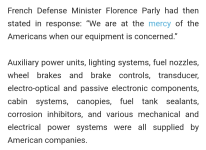MirageBlue
Full Member
- Feb 20, 2024
- 525
- 834
- Country of Origin

- Country of Residence

In other very interesting news, the Brazilian FAB is also likely to consider the Tejas (Mk1A or Mk2 isn't sure) for it's F-5 replacement program.
Brazilian FAB Chief of Staff is in Bangalore and will get to sit in a Tejas cockpit for the first time.
Just recently there was talk that the FAB could look for second hand F-16s to replace it's F-5s.
The most interesting aspect is that the FAB has rules that state it must have a minimum of at least 2 different fighter types in service or at the most 3 fighter types. Once the FAB retires it's F-5 fighters, it will be left with only the Gripen E, since the AMX too has retired from FAB service.
I hope they go in for the Tejas Mk2, although it will be a little costlier than the Tejas Mk1A, it's range and payload are going to be in the same range as the Gripen E, at a probable lower cost of acquisition.
What would work best is to tie the deal for C-390 transports for the IAF, a deal that is going to be even bigger than the number of C-390s Brazil operates, to a purchase of Tejas Mk1A or Mk2 fighters. A win-win for both countries.
India Brazil defence talks focus on Tejas, C390 and more
Brazilian FAB Chief of Staff is in Bangalore and will get to sit in a Tejas cockpit for the first time.
Just recently there was talk that the FAB could look for second hand F-16s to replace it's F-5s.
The most interesting aspect is that the FAB has rules that state it must have a minimum of at least 2 different fighter types in service or at the most 3 fighter types. Once the FAB retires it's F-5 fighters, it will be left with only the Gripen E, since the AMX too has retired from FAB service.
I hope they go in for the Tejas Mk2, although it will be a little costlier than the Tejas Mk1A, it's range and payload are going to be in the same range as the Gripen E, at a probable lower cost of acquisition.
What would work best is to tie the deal for C-390 transports for the IAF, a deal that is going to be even bigger than the number of C-390s Brazil operates, to a purchase of Tejas Mk1A or Mk2 fighters. A win-win for both countries.
India Brazil defence talks focus on Tejas, C390 and more
The Tejas Light Combat Aircraft, the Brazilian Embraer C-390 Millennium and Indian-made helicopters were on the agenda when the air force chiefs of Brazil and India met yesterday evening, as were joint work on drones and space satellites for surveillance. Air Chief Marshal V.R. Chaudhari and Lieutenant-brigadier Marcelo Kantiz Damasceno met yesterday evening. The Brazilians are considering the Tejas, the indigenously developed fighter aircraft and also, helicopters (Damasceno will be in Bangalore where Hindustan Aeronautics that makes the Dhruv and the Prachand) is headquartered. They also made the case for the C-390 medium transport aircraft, saying it compares favourably with the American C-130. Importantly, keeping in mind the Make in India regulations, Embraer, which manufactures the C-390, has two memorandum of understandings (MOU) with Mahindra: it could be manufactured here and exported, if there is an opportunity.
Speaking to Times Now, the Brazilian air chief made it clear that the Tejas was one of the options for his air force. "According to our rules, we should have not less than two and not more than three kinds of fighter aircraft. Currently, we have the F-5 and the Gripen, but after 2030, we will need maybe two more kinds as the F-5 goes. So, while the Gripen remains, the Tejas is one of the options for our second or third fighter plane," he said.
He will be in Bangalore, he said, looking at the Tejas for the first time and will be sitting in the aircraft. The Tejas is a single-engine multi-role fighter and the IAF has ordered over 200 of them. It is largely indigenous with the engine being GE's 404.
Helicopters are a major requirement for Brazil, Damasceno (a four-star general) said. "We have seven squadrons of 12 helicopters each and we are looking for more, perhaps 24 new choppers," he said. This will include choppers for a new squadron for the Amazon area and for flood relief. "We will consider Indian helicopters," he added.



